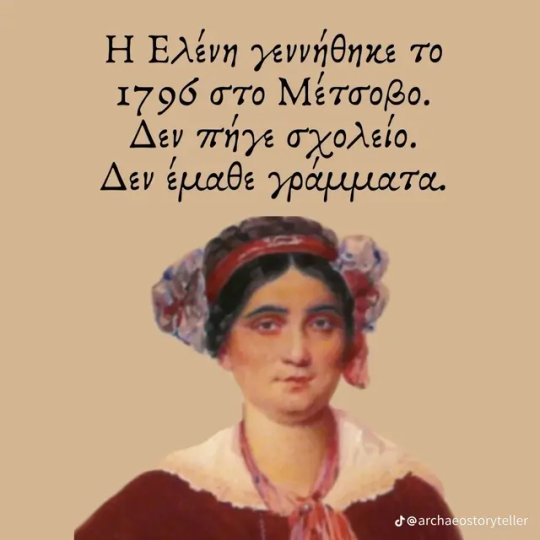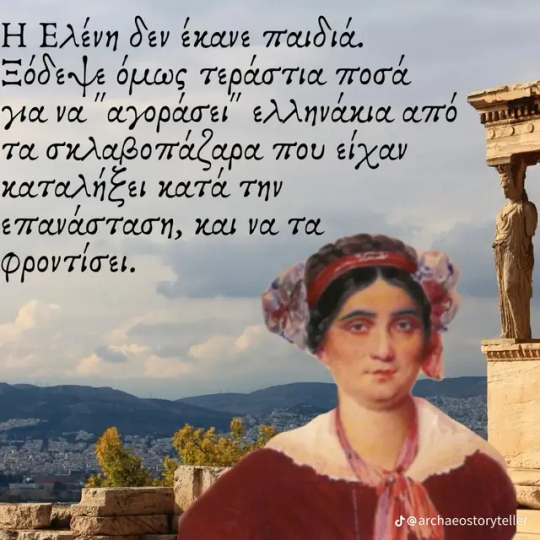#greek women
Text
"Women only started working very recently so a woman's place is the house-" shut up and feast your eyes at old photos of women from around the world doing physical labor only for them to return home and solely care for 5-10 children and the elderly parents of their husband.
Greek women represent:

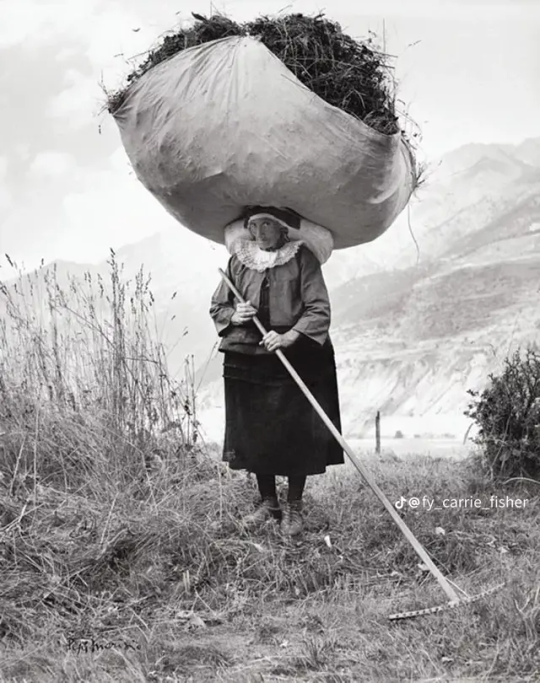
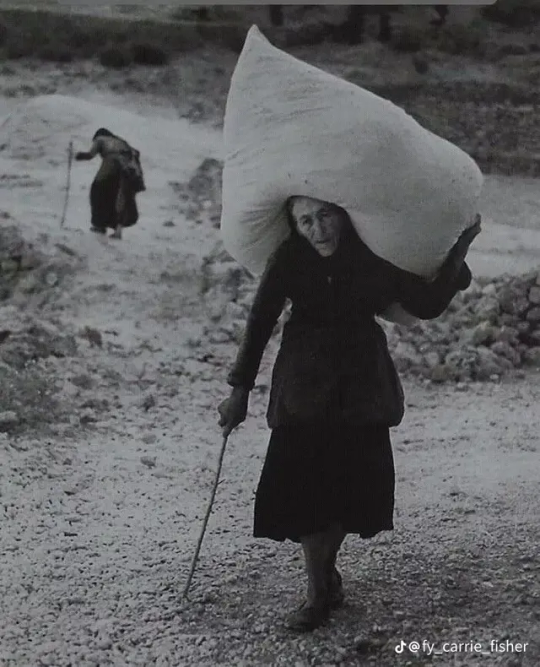
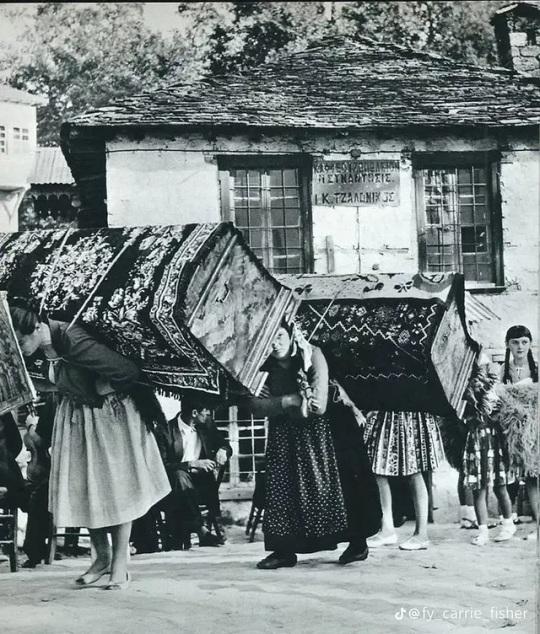
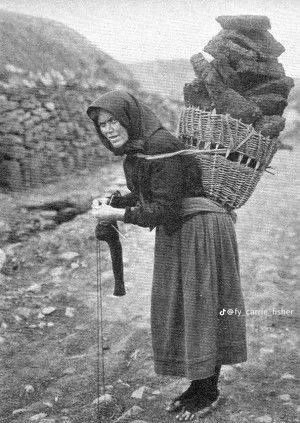
These photos show Greek women doing the type of physical labor they would perform more often than not. At the luckiest working conditions for rural women (aka most of the country) they would start working the fields as children and when they got older they would work the same fields with their own babies on their backs.
On the way home from the fields, sometimes the women would carry the wood and the mule would carry the man so he could rest.
Of course, we can talk about the manual labor that is rubbing cloth and metal for hours on end, chopping and carrying wood to light a fire for a large cauldron your size, and stirring it for hours.
But we can also talk about how it wasn't for them to break and carry rocks in baskets for the making of new roads. They would gather salt, olives, and grapes and carry them on large baskets filled to the brim. For salt they carried thirty kilos each trip, doing fifty trips each, stepping shoeless on the grains of salt.
Carrying water was also their job, often moving large barrels with all the water a house of 10 needed upon hills that horses and mules had trouble ascending.

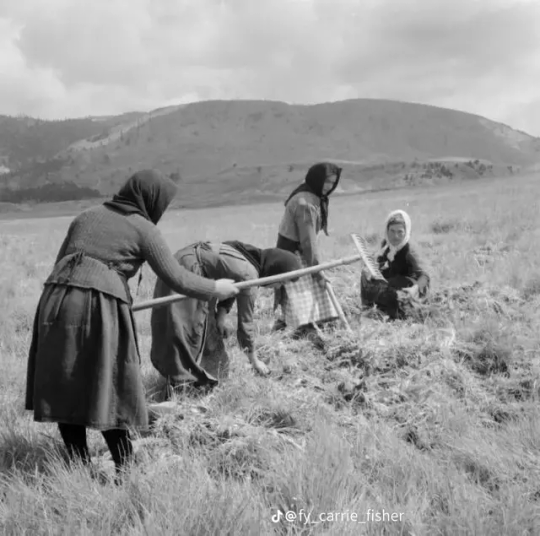
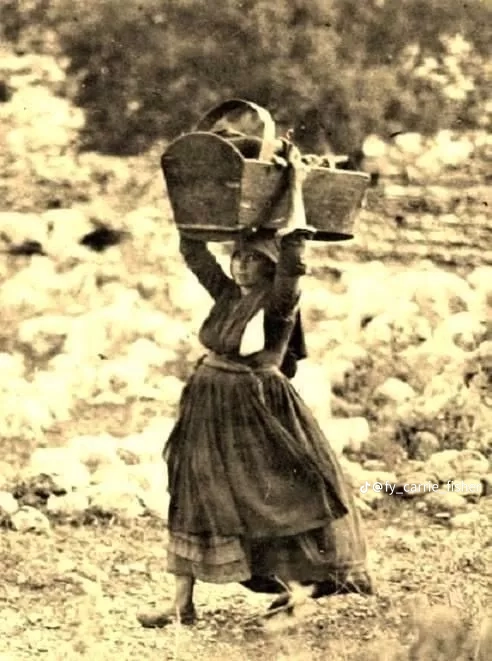


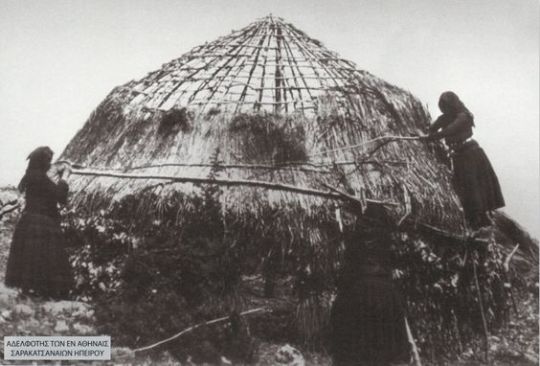

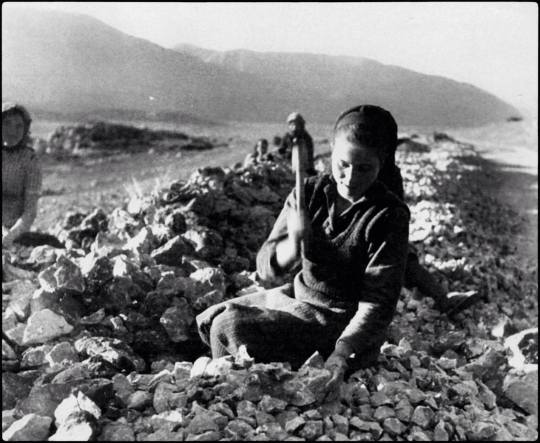
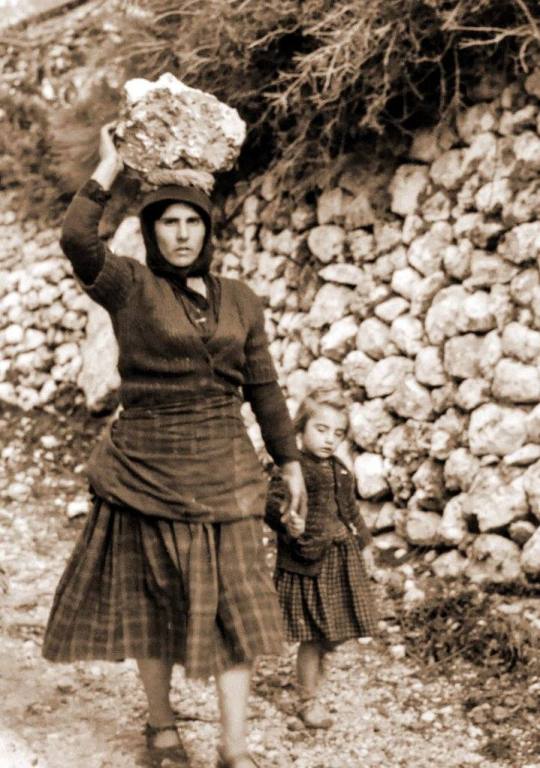



(more photos for salt mining and carrying here)
It's no hyperbole to say these women carried their incomes and households on their backs. "The good she-housekeeper is a slave and a lady" the old Greek saying goes. A "good woman" was a woman who could be strong and work at home and in the field, often described with the qualities of a mule. Men took their wives out in the fields so much that some who were a bit more educated had to make their husbands sign that they wouldn't ask them to work alongside them in the fields! (source in Greek)
Some of these photos are also from 1970. I'm missing a photo from Leukada showing women carrying baskets of the stones they broke, and I'll add it here when I find it.
Basically, women were out of the house forever. A woman who got to stay home and never perform any labor had some type of privilege (wealth, status etc). Same as the many privileged men around the world who didn't perform any labor at all.
===================================
If my posts have helped you in any way consider buying me a ko-fi 💖
#greek women#greece#greek history#vintage#vintage photo#manual labor#working class#greek people#working class history
2K notes
·
View notes
Text

she gets me she just does
#kassandra#cassandra of troy#kassandra of troy#greek mythology#anne carson#greek women#tagamemnon#speaking of#fuck agamemnon#apollo#etymology#cannot believe i forgot that tag
683 notes
·
View notes
Text

in hills made of coarse earth and honey🏺
✦ find me on instagram @the.flightless.artist ✦
#art#illustration#digital art#drawing#digital illustration#procreate app#digital drawing#digital artist#procreate art#ipad pro#ancient greece#ancient greek art#historical illustration#historical aesthetic#historic fiction#greek aesthetic#oh to be them#greek women#women in art#female friendship
632 notes
·
View notes
Text

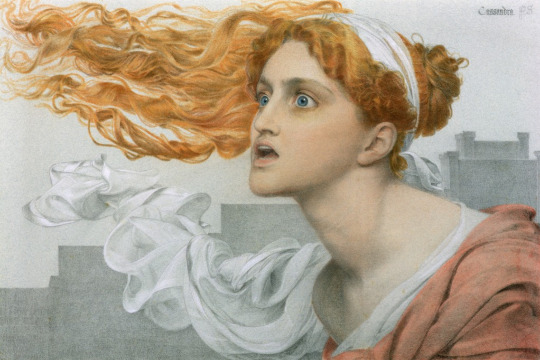



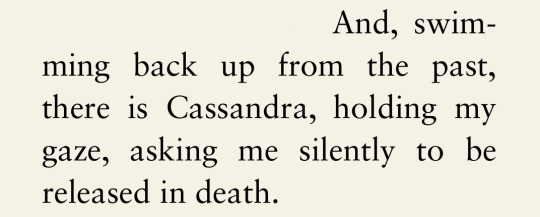




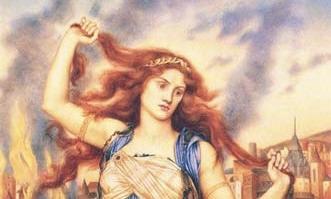

— On Cassandra of Troy
"Cassandra" by Florence and the Machine // "Cassandra" by Anthony Frederick Augustus Sandys // "A Thousand Ships" by Natalie Haynes // "The Cassandra Scene in Aeschylus' Agamemnon" by Seth L. Shein // "Ajax and Cassandra" by Johann Heinrich Wilhelm Tischbein // "Elektra" by Jennifer Saint // "Cassandra of Troy" by Jan Drenovec // "mad, mad, mad" by @diradea // "mad woman" by Taylor Swift // "Helen and Cassandra" by Al Stewart // "Cassandra of Troy" by Evelyn de Morgan // "The Daughters of Troy" by Euripides
#cassandra of troy#tagamemnon#web weave#web weaving#mental illness#the iliad#trojan war#classics#ancient greece#mad woman#art history#apollo#euripides#elektra#greek retelling#greek women#light academia#psychic#dark academia
2K notes
·
View notes
Text
Side note:
Sophie Okonedo played two famous Greek women. She was just brilliant as Shakespeare's Cleopatra @ The National Theatre

Also got the chance to see her as Medea @ Soho Palace summer just gone

Awesome woman
#sophie okonedo#cleopatra#medea#greek women#greek mythology#national theatre#soho palace#Shakespeare#see some theatre
140 notes
·
View notes
Text

#greek mythology#snake#snakes#greek aesthetic#greek women#gold#crystal ball#medusa#medusa aesthetic#medusa diety#medusa worship
100 notes
·
View notes
Text
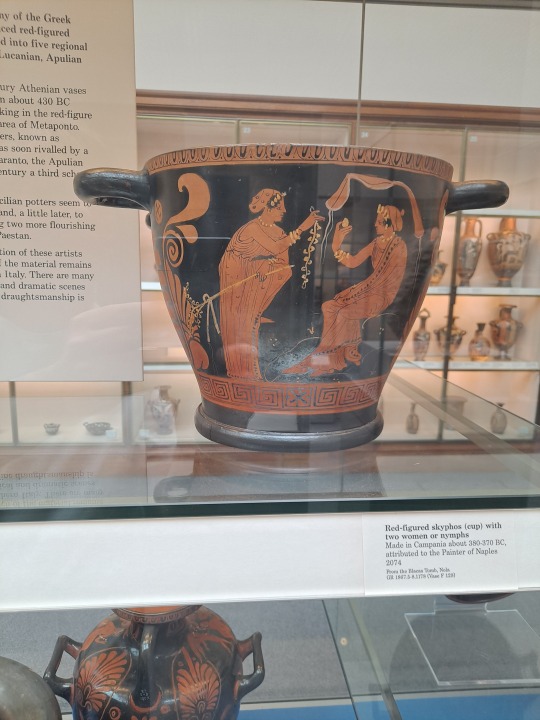
Campanian cup
* Nola, Blacas Tomb
* 380-370 BCE
* Painter of Naples
* British Museum
* [3000 x 4000]
London, July 2022
48 notes
·
View notes
Text

2 notes
·
View notes
Text
Women’s History
viking age (800 to 1050 AD)
most women in the viking age were housewives to their husbands. they often managed the farms and agricultural responsibilities. women were believed to have a choice on who their husband was to be, and even were thought to be able to back out of a marriage if they later decided they didn’t like their husband.
women spent much of their time in the house working with wool, spinning yarn, sewing, and weaving for her family. taking care of the children was a large part of a woman’s life in the viking age. women were expected to have many children to help around the house, and they were expected to breastfeed each child after they were born (since formula was yet to exist).
compared to many women during this time period, viking women had lots of freedoms. in mythology the women are portrayed as independent, confident, and powerful. however, women at this time could not appear in court or receive a share of the man’s inheritance. men had all the political power in this society. literature from this time also shows that women could often find themselves with power if they could somehow make their husband respect them.
ancient egypt (2700 to 1100 BCE)
we all know the famed cleopatra, but ancient egypt has a longer history of powerful women. one of the first female pharaohs in egypt was hatshepsut, who began her rule around 1500 BCE. hatshepsut became queen when she married thutmose ii (her half-brother), around the age of 12. upon thutmose’s death in 1479 BC, she became regent for her stepson, who at the time was an infant. seven years later, she took on the title and full powers of a pharaoh, co-ruling with her stepson. hatshepsut’s step to power garnered lots of controversy, and she had to fight to prove her legitimacy to the throne. she was born to thutmose i, and she claimed that he had appointed her his successor. hatshepsut ordered to be portrayed as a male once she claimed the throne, wanting to be depicted with a beard and a muscular body. despite this order, there are images where she appears in the traditional female regalia of ancient egypt. she tried to surround herself with supporters from key positions in the ancient government, likely hoping to elevate her status and the trust of her subjects. she began taking on ambitious projects during the time of her rule. she is notably known for the memorial temple at deir el-bahir. she also authorized a trading expedition that brought back many profits for egypt like ivory, ebony, gold, leopard skins, incense, and more. hatshephut died around 1458 BC (in her mid-40s) and was buried in the valley of the kings located in the hills of deir el-bahir. her father was reburied to be with her, in a last effort to legimitize her reign. thutmose iii had almost any trace of hatshephut erased upon his rule, so she was not known about by scholars until 1822. another female ruler of egypt was nefertiti. she married amenhotep iv. it’s unknown exactly who nefertiti’s parents were, although it’s theorized she is either the daughter of ay, or a princess from a mittani kingdom in northern syria. amenhotep iv was a monotheist, and during his reign he displaced egypt’s cheif god, amon, in favor of aten. he also changed his name to akhenten, and nefertiti took the additional name of “neferneferuaten” which means “beautiful are the beauties of aten, a beautiful woman has come”. under her husband’s rule she began to be depicted as a mirror image of him. in tombs and temples built during akhenten’s reign, nefertiti is depicted in positions of power and authority that no other queen had been seen depicted with. some instances of this were leading worship of aten, or even smiting enemies. nefertiti mothered six daughters, and after the sixth, akhenten took other wives to eventually birth king tutankhamen. king tut would eventually go on to marry nefertiti’s daughter ankhesenpaatan. around the 12th year of akhenten’s reign, nefertiti seems to disappear from record. it is possible that this is because of her death, although many historians and scholars theorize that she actually took the guise of a man to rule alongside her husband as smenkhkare. it is thought that after his death, she took place to begin undoing his religious policies, which is rooted in the fact that nefertiti paid for a scribe to make divine offerings to amun, begging and pleading with the high god to come back and get rid of the darkness in her kingdom.
the most well known of the female rulers in ancient egypt is cleopatra. she was born in either 70 or 69 BC, the first daughter of ptolemy xii. at age 18, Cleopatra became the dominant co-regent with her 10 year old brother, ptolemy xiii. her brother’s advisors quickly took action against her place on the throne, and cleopatra fled egypt to syria in 49 BC. there, she raised an army, and returned to egypt to create a civil war at pelusium. during this time, ptolemy invited julius caesar to alexandria. cleopatra allegedly snuck into royal palace to plead for caesar’s help. caesar needed for egypt to pay it’s debts owed to auletes in order to fund his own return to power in rome. many months of fighting between the forces of julius caesar and ptolemy xiii occurred until roman reinforcements showed up and the pharaoh was forced to flee alexandria. thought of have drowned in the nile river, ptolemy xiii was never seen again. caesar entered alexandria and restored cleopatra to power, where she became co-regent to another younger brother of hers, ptolemy xiv (13 at the time). julius caesar stayed with cleopatra in egypt, and in 47 BC they had a child, ptolemy caesar, who was known to the egyptian people as “little caesar”. around 46 BC cleopatra traveled with her brother and son to visit caesar in rome, as he had returned sometime before. after he was murdered in 44 BC, she returned to egypt. ptolemy xiv was murdered soon after. cleopatra was named co-regent to her son. her hold on power at this time was as much as she had ever had, being that her son was still an infant. flooding began to lead to inflation and hunger while egypt was being asked for help in a roman conflict. cleopatra sent four roman legions who caesar had stationed in egypt to help his previous allies in rome. in 42 BC, after defeating caesar’s assassins, his allies split power in rome. mark antony, one of the allies, summoned cleopatra to tarsus to explain the role she had played in the roman conflict. according to plutarch, mark antony was seduced by cleopatra and agreed to protect egypt, along with cleopatra’s crown. cleopatra returned to egypt, followed by antony. he spent two years in alexandria. in this time, him and cleopatra formed a drinking society called “the inimitable livers”. in 40 BC, after antony had returned to rome, cleopatra gave birth to a set of twins who she donned alexander helios and cleopatra selene.
commonfolk women in egypt had a duty first as a mother and wife, often having professions like weaving, perfume making, and entertainment. despite their first commitment being towards family, they were allowed to have their own businesses, own and sell property, and serve as witnesses in a court case. many women in the middle east at the time were not allowed to be in the company of men, but in egypt they could be. divorce was also an option for the women of egypt as they were allowed to use it in order to escape bad marriages. from our earliest records, women and men seem to have a fairly similar formal status. both men and women in ancient egypt were able to choose their actions, and had to suffer the consequences of their own actions. women were legally allowed to acquire, own, and sell property, with or without a husband. they were allowed to initiate court cases, as well as do many other legal proceedings under their own name, rather than that of their husband. from the evidence we’ve recovered from the old kingdom, women were often shown as merchants and priestesses (most commonly being priestess for hathor).
although these may not seem like incredible privileges, ancient egypt was well ahead of other societies at the time and their views on equality.
ancient greece
women in ancient greece had very little rights under their own name. they were unable to vote, own/inherit land, and were often only seen as mothers and wives. women were allowed to go to school, but often had more of an emphasis towards dancing and music than towards academic subjects. women in ancient greece were expected to be virgins upon marriage, and were meant to marry at a young age. in most cases, the marriages were organized by the father, often having him sign a dowry for his daughter to marry someone’s son. if they did not have a father another male guardian or relative must sign off on the marriage. married off at 13 or 14, women lived their lives at home, their husbands often seeking satisfaction outside of their marriages. there was no a place in society for single females, as roles for them did not exist.
married women in ancient greece were seen as the property of their husbands by the law. they were expected to be faithful, despite their husbands having the option of going off to prostitutes, and were expected to bear children of the men they (most often) didn’t truly love. they were seen as incapable of making decisions for themselves. if a wife were to not honor her family, she would be banned from religious ceremonies, which in this society was an incredibly huge dishonor. if she were to cheat on her husband, the husband could kill her with no legal prosecution taking place. women had few personal belongings, most of which were clothes and jewelry that had been given to them. if one’s husband were to die, they could not inherit anything from the will, instead having to remarry and let her new husband claim it. if a father were to die, they’d leave their legacy for their male children, and if the women were an only child, her husband would be the one to claim the inheritance.
despite the treatment of women in ancient greek society, there were many powerful goddesses in greek mythology. athena was attributed goddess of wisdom and military victory, aphrodite the goddess of love and beauty, demeter the goddess of agriculture, hera the patron of childbirth, artemis the goddess of the hunt, selene the goddess of the moon, so on, and so on. women in the mythology are often depicted as emotional and troublemakers, showing their view on women during the time.
middle ages (5th to late 15th century)
women during the middle ages often had jobs working the land, and they participated in agricultural duties alongside men. women in the lower class were often bakers, brewers, milkmaids, barmaids, artisans, weavers, and farmers.
women of the time could be educated, but most were only educated in domestic affairs like sewing and cooking. although, noblewomen and nuns had access to many books, the common population did not. education was mostly restricted to the upper class and the clergy. women could have a place in the clergy, but only as nuns. noblewomen had power depending on how much land they brought to their marriage, as during this time, land often equaled power. women were expected to remain “pure” until they found themselves a husband.
women in the early middle ages found themselves gaining power for multiple reasons. with the outbreak of the black death, many of the european population died. because of the lack of people, women were allowed to own businesses that belonged to their late husbands. they were also gaining rights due to the popularity of the cult of the virgin mary. despite gaining a few rights within this time, they were always viewed as second class citizens, their lives an afterthought to the men who ruled.
marriage rights in this time were decided by the lords. once a woman was married, her husband was considered to be her owner. he would control what his wife’s interests and were considered responsible for any behavior a woman may show.
the reason women had so few rights during this time was because of the rise of the catholic church, and their beliefs lying in the story of adam and eve, seeing women as temptresses and often finding them to be evil.
women’s suffrage
during the 1820s and 1830s, the campaign for women’s suffrage truly begins. reform groups were beginning to organize across the united states, and women played a prominent role in the movements. in 1848, a group of abolitionist-activists gathered in seneca falls to discuss women’s rights. the majority of the group agreed that women were their own individuals that should have their own political identities.
when the 14th and 15th amendments were introduced, the women’s suffrage movement pushed for women’s rights to be introduced. the 14th amendment that allowed black men to vote defined citizens as males. women pushed harder against lawmakers to no avail. many women began to ally with racist southerners in an attempt to prevent the 15th amendment.
in 1869, the national women’s suffrage administration was founded by elizabeth cady stanton and susan b. anthony. the endangerment towards the rights of people of color by tying the movements together resulted in the formation of the american woman suffrage association. this group fought state-by-state for the enfranchisement of women, while also supporting the 15th amendment.
in 1890, the groups merged together to become the national american woman suffrage association. this group used a new argument for women’s suffrage. previously, women were arguing for the right to vote since they were equal to men, but in 1890 women began arguing for the right to vote because they were different from men. this argument served to the advantage of the women as it addressed many political agendas.
in 1910, western states began granting women the right to vote. southern and eastern states resisted this change, not believing women were worthy of the same rights as men. in 1916, the president of the national women’s suffrage association revealed the “winning plan”. this plan was a campaign which had local and state suffrage organizations travel the country to fight for their rights.
at the same time, the national women’s party was founded by alice paul. their strategy was to create drama such as hunger strikes and protests in front of the white house.
the mission of the suffragettes was slowed due to world war one. women managed to spin the narrative in their favor, claiming that their efforts during the war showed they were just as deserving as men of the right to vote, and on august 20, 1920, the 19th amendment was ratified.
some of my favorite women throughout history
marie-antoinette-josèphe-jeanne d’autriche-lorraine (originally maria antonia joseph’s joanna von österich-lothringen) was born november 2, 1755 in vienna, austria. she was the 11th daughter of the holy roman emperor francis i and maria theresa. at 14 years old, marie-antoinette’s hand in marriage was given to heir to the throne, louis xvi. she had an unpopular image when relations between france and austria became rocky. the public viewed her to be a representative of austria, which was a view that stuck to her her entire life. louis was an incredibly inattentive husband to the young girl, so she sought out entertainment in a circle of favorites and politically vulnerable companions. marie-thérèse-louise de savoie-carignan was one of marie-antoinette’s closest friends during this time. marie had very little political duties and spent lots of time indulging in her well-known extravagant taste. many people in the public poked fun at her at the time, and began to spread outlandish and sexual rumors about the girl. it became a trend to blame all of france’s problems on marie-antoinette.
after the american revolution, france began to fall into debt, and although it wasn’t her fault, marie began to get lots of blame. as time went on, many people began labeling her an “austrian whore”.
in oct of 1789, a min of parisian women protesting dragged the entire royal family to the city and imprisoned them. in june of 1781, louis xvi and marie-antoinette fled paris, hoping to escape to austria. there was a rumor that the holy roman emperor had troops prepared to invade france. this rumor once again sparked controversy for marie, labeling her as a traitor.
the royal family returned to france ans louis was reinstated as king. in april of 1792, the radical revolutionary government declared war against austria. the french army, which was broken in pieces at this point, did not fair well. they turned their blame to marie once again. in august, a mob overthrew the monarchy and locked the royal family in tower. the next month, revolutionaries began to massacre royalist prisoners by the thousands. during this time, marie’s best friend, princesse de lamballe, was dismembered in the streets. her body parts were then paraded through paris.
in december, louis was put to trial and beheaded for treason. in july of 1793, marie lost custody of her son, who was then forced to accuse her of sexual assault and incest against him. she was sent to the guillotine for treason at age 37.
-
anne boleyn was born around 1500 to sir thomas boleyn and elizabeth howard. much of childhood was spent in hever castle in kent, as her mother was the daughter of one of the most powerful men in the country.
in 1513, anne was sent to the court of marageret of austria, later being moved to a french court. anne had originally served as a companion to louis xii’s wife, mary. after his death in 1515, she settled in france in the household of queen claude. anne stood out amongst these courts as she was talented in music and dance. in 1522, boleyn returned to england and resides in king henry viii’s court. many people admired her beauty and youth, including the king himself.
at the time, henry was married to catherine of aragon, and together they had a daughter named mary. in 1527, henry began to secretly plan an annulment for his wedding to queen catherine. the pope refused to grant the annulment to henry.
in january of 1533, henry and anne were secretly wed. on easter of that year, their wedding was made public. their marriage was only valid due to the fact that henry changed the church that england followed with. while married to catherine of aragon, england followed the rules and regulations of the catholic church, but upon his marriage with anne, the country found itself operating under the church of england.
anne bore a child, elizabeth i. unfortunately, after this, she had many miscarriages followed but no successful pregnancies. in 1536, anne was accused of adultery and plotting against the kings life. on may 2, she was arrested and taken to the tower of london. anne tried to plead innocent, but the king had already fallen for another mistress and took no mercy upon her pleas. on may 19, she was beheaded by a skilled swordsman. her final words were reported to have been, “i am come hither to die, for according to the law and by the law i am judged to die, and therefore i will speak nothing against it… i pray god save the king… for a gentler nor a more merciful prince was never there.” she was buried in the chapel of st. peter and vincula tower.
11 days after anne’s execution, henry married his mistress, jane seymour.
-
marie laveau was born september 10, 1801. she is often referred to as the most famous voodoo queen of the south. while there isn’t much information available about marie laveau, many scholars agree the story begins with her grandmother, catherine henry. catherine was said to have gone through a long line of owners before being emancipated and becoming a free woman of color. catherine took the name and surname of her first master henry roche belaire. catherine’s daughter, marguerite remained with roche until he died before being sold to another. this new master set her free.
after having gained her freedom, marguerite became a placée of henri d’arcantel. a placée performed all the duties of a wife, but were not recognized as such to the public.
marie’s father, charles laveau, was a free black man, so when marie was born, she found herself born into freedom. there is little known about marie’s childhood, but it’s believed that she lived with her grandmother.
legal records show a marriage contract between marie and jacques paris. they married on august 4, 1819. it is debated on whether or not they had children.
marie was known as the “widow paris”, although it’s unknown what happened to her husband. she became a hairdresser following his death, catering specifically to wealthy and white families. she began a relationship louis christophe dominic duminy de glapion, they were together until his death in 1885. there are no records she was in any more relationships after his death. there’s official documentation of seven children from this marriage, although some believe she may have had fourteen or fifteen.
sometime in the 1820s marie was known to have started a career in voodoo. she was known to have given private sessions and sell invocations, as well as magickal objects. later in life, she was known to visit church and do charitable acts, although many scholars believe laveau was a catholic her entire life. in her final years, she spent time with her family and continued her charity.
-
sources
https://www.ushistory.org/civ/3f.asp#:~:text=Egyptian%20women%20could%20have%20their,marriages%20by%20divorcing%20and%20remarrying.
https://fathom.lib.uchicago.edu/1/777777190170/
https://www.worldhistory.org/article/927/women-in-ancient-greece/
https://www.getty.edu/news/what-was-life-like-for-women-in-the-middle-ages/\
https://www.worldhistory.org/article/1345/women-in-the-middle-ages/
https://sites.udel.edu/britlitwiki/women-in-medieval-literature-and-society/
https://www.history.com/.amp/topics/womens-history/the-fight-for-womens-suffrage
https://www.history.com/news/9-things-you-may-not-know-about-marie-antoinette
https://www.britannica.com/topic/woman-suffrage
https://www.britannica.com/biography/Marie-Antoinette-queen-of-France
https://www.hrp.org.uk/tower-of-london/history-and-stories/anne-boleyn/#gs.trtum7
https://www.britannica.com/biography/Anne-Boleyn
https://louisiana-anthology.org/encyclopedia/l/whitaker--laveau.html
https://www.womenhistoryblog.com/2012/07/marie-laveau.html
#women#international women's day#women history#women's suffrage#women's rights#viking women#greek women#Middle Ages women#marie antoinette#marie laveau#anne boleyn#misunderstood women
10 notes
·
View notes
Text
Greek folk costumes from Macedonia 🇬🇷
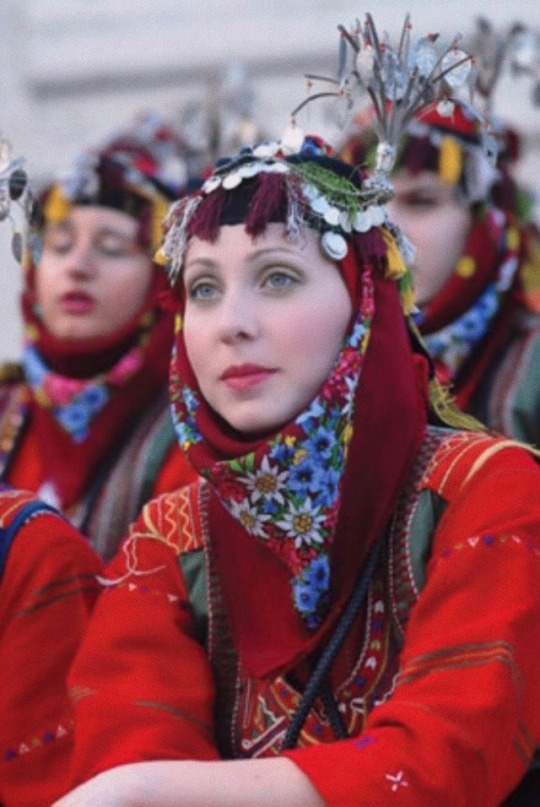



#greece#traditional#folk#greeks#greek culture#aesthetic#painting#greek women#greek beauty#greek people#greek folklore#folk dress#folklore#traditionalism#greek tradition#folkdress#hellas#hellenic#balkans#balkanculture#culture#macedonia
57 notes
·
View notes
Quote
Sexually faithless, deceitful, murderous: Clytemnestra is the incarnation of ancient anxieties about women and power.
Myth of the Week: Clytemnestra, Madeline Miller
#clytemnestra#greek myth#Madeline miller#circe#girlhood#womandhood#carpark poetry#greek women#greek gods#Greek Mythology#feral women
47 notes
·
View notes
Text




18 notes
·
View notes
Text
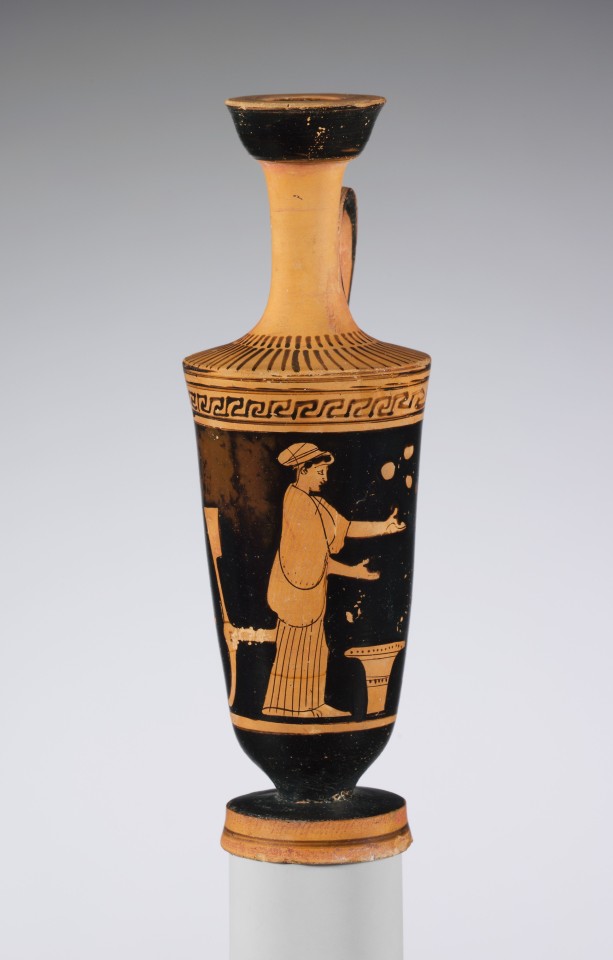
Lekythos with Woman Juggling, Carlsruhe Painter. Metropolitan Museum 41.162.147. Mid-5th C BCE H. 6 1/2 in. (16.5 cm); diameter 2 1/8 in. (5.4 cm).
25 notes
·
View notes
Text
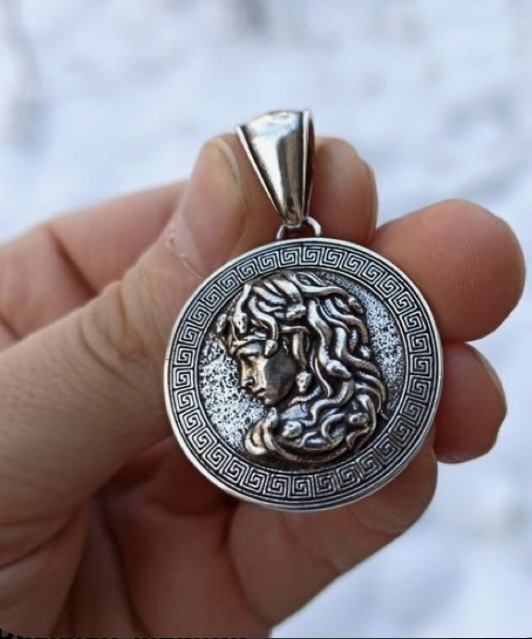
#greek mythology#snake#snakes#greek aesthetic#greek women#medusa#medusa aesthetic#medusa diety#medusa worship#ancient greek mythology#Medusa jewelry#silver#silver jewelry#Medusa pendant
45 notes
·
View notes
Text

Greek female figurine
Cyrenaica
2nd -3rd century BCE
British Museum
London, July 2022
#Greek#figurine#Cyrenaica#ancient#art#2nd century BCE#3rd century BCE#ancient colours#clothing#Greek women#terracotta#hairstyle#British Museum#my photo
23 notes
·
View notes
